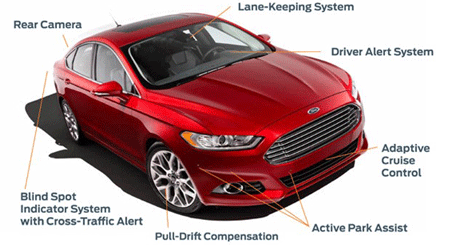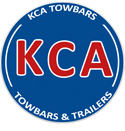Towing Related Safety Features

Adaptive Suspension
Adaptive air suspension is an electronically controlled air suspension system usually found on all four wheels, with a continuously adaptive damping system. Most vehicles fitted with Adaptive Suspension are able to vary their ride heights as well as the damping characteristics, and some can even detect the exact weight placed upon the rear of the vehicle whenever a trailer or caravan is coupled. Once the electrical towing plug is connected, a number of vehicles will adjust their height setting in order to keep the towing combination perfectly level and therefore more stable. They can also adjust the damping forces of the shock absorbers according the extra weight placed upon them. On vehicles with network systems, this feature will not function should inappropriate towing electrics be installed!
Trailer Stability Program – T-Esp
This is a system that is being incorporated into the brake electronics more and more. With the on-set of the requirement to have ESC* in every vehicle designated for distribution in Europe, T-Esp will become a rapidly growing feature. This system is designed to correct the “Snaking” effect that is usually caused by heavy gusts of wind, or a poorly loaded caravan or trailer. By using the vehicle’s brakes and engine to control the speed and oscillation of the trailer the system stabilizes the towing vehicle and trailer combination. Once again, the vehicle needs to detect the presence of a trailer or caravan in order to determine how the on-board yaw sensors function. The Trailer Stability Program – T-Esp page will inform you about how this system works and also inform you about some of the benefits. On vehicles with network systems, this feature will not function should inappropriate towing electrics be installed!
Lane Change/Side Assist
This feature is becoming more and more popular on today’s vehicles. Most systems are equipped with a small camera/radar device fitted into each wing mirror. It is designed to alert drivers of the presence of on-coming vehicles entering the rear “blind spots”, particularly when changing lanes. The system constantly monitors the adjacent right and left lanes and will provide an optical alert – with warning lights if a vehicle is detected in the blind spot zone. The system determines that the driver is performing a lane-change procedure through activation of the flasher indicator and will alert him/her accordingly. With a trailer connected, the system (Hella-Audi) becomes de-activated and the driver is alerted with a message display. This is because the towing vehicle is not currently able to recognize the additional length of a caravan which narrows down the monitored zone. Note: Hella are working on being able to incorporate the additional length needed when towing by increasing the rearward zone. On vehicles with network systems, this feature will not function should inappropriate towing electrics be installed! Therefore the use of any by-pass electrics will seriously compromise this system!
Adaptive Cruise Control
Another adaptive system which can be altered by the detection of a trailer is the Cruise Control system. This new system utilizes radar lasers at the front of the vehicle to detect the exact distance of any vehicles in front. The driver is able to set the distance and/or speed that is appropriate and the vehicle will remain at these presets by constantly monitoring the distance and applying the brakes or throttle when needed. When towing, most systems will automatically set their cruise control to the maximum distance. This is to allow for the extra time needed to slow down a heavier towing combination. In the event of an emergency, some cruise control systems can also bring the vehicle to a complete standstill. On vehicles with network systems, this feature will not function should inappropriate towing electrics be installed!
Integration Of The Trailer In The Anti-theft Alarm Of The Vehicle
All manufacturers may produce their alarm systems to recognise the disconnection of the towing plug from the alarmed vehicle. This would require a can-bus module based wiring harness to be fitted to the vehicle and may also require the towbar specialist to perform a simple coding operation to activate the feature. On vehicles with network systems, this feature will not function should inappropriate towing electrics be installed!
Park Assist
As the vehicle passes a parking space, the system ascertains the dimensions of the available space and of any obstacles. Once it has evaluated this sensory data, it automatically calculates the ideal parking manoeuvre. The driver then presses the button, which activates the parallel parking assistant, engages reverse gear, and uses the pedals to control the speed. The car will then steer itself into the available space. This system is automatically dis-engaged when a trailer is connected as the overall length of the vehicle has changed. On vehicles with network systems, this feature will not function should inappropriate towing electrics be installed!
